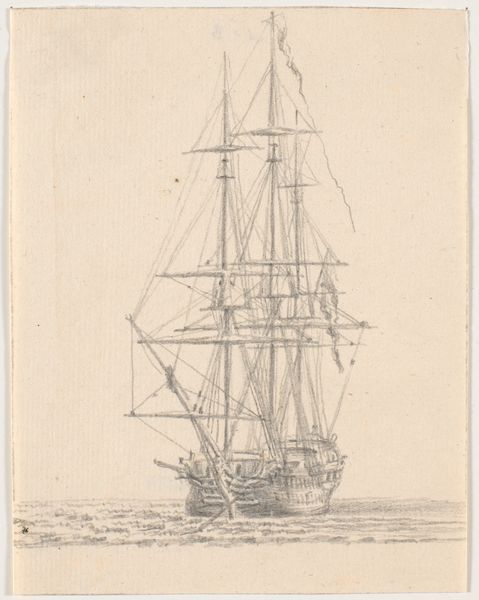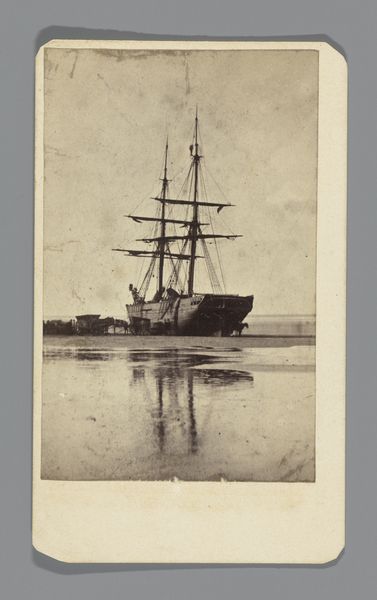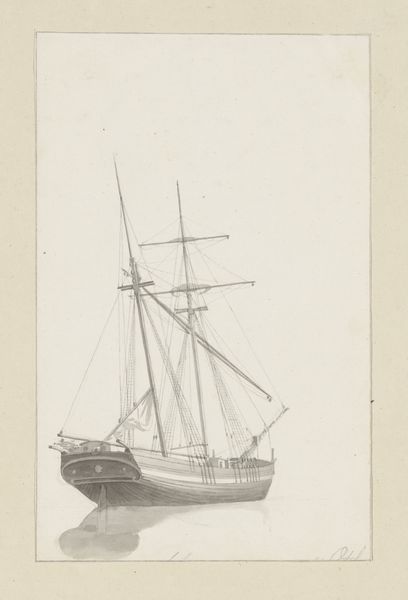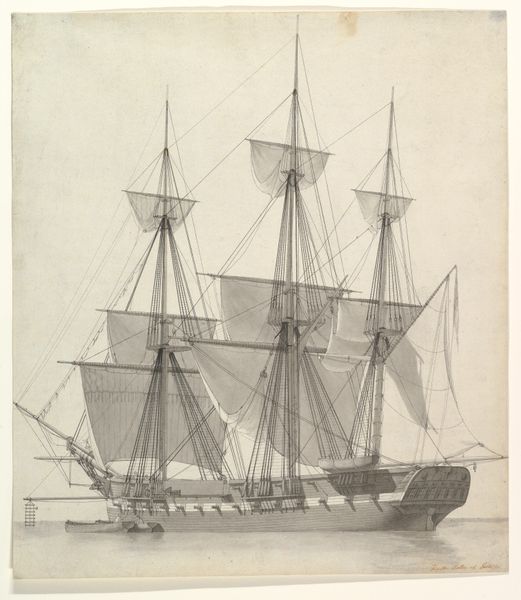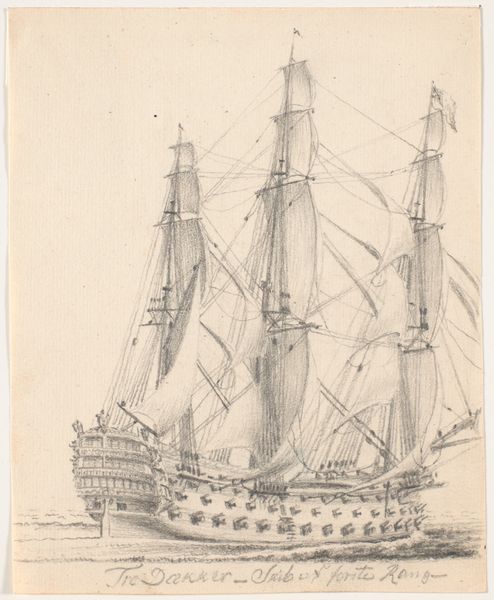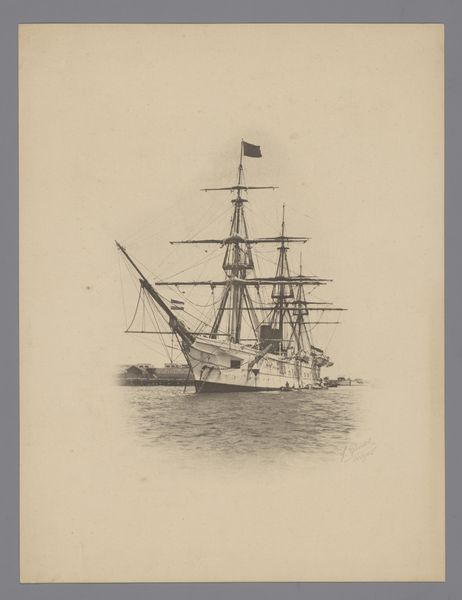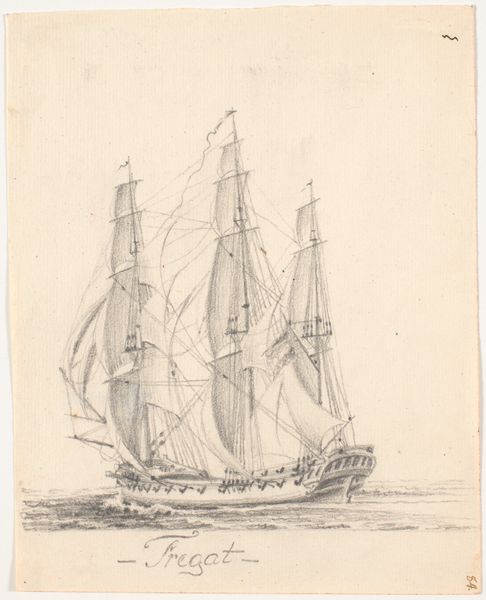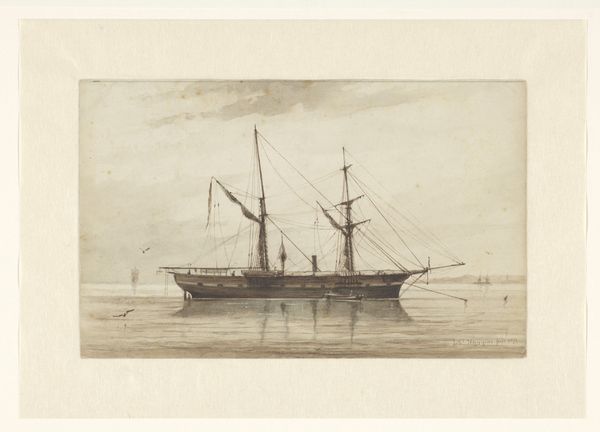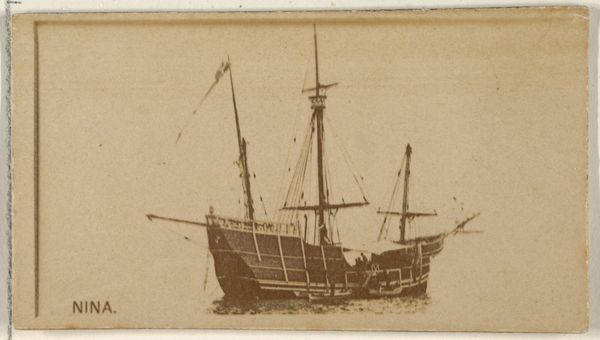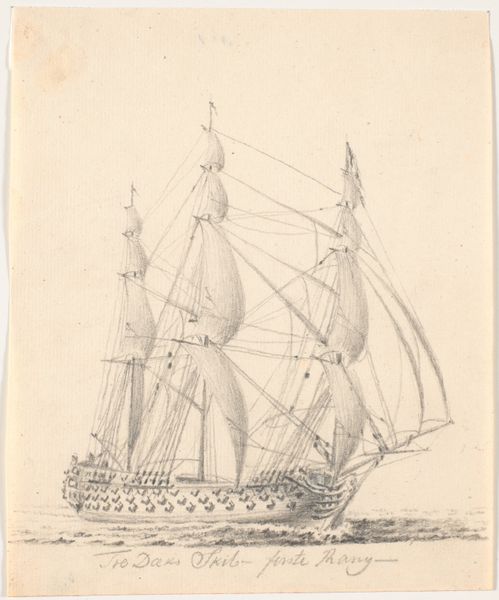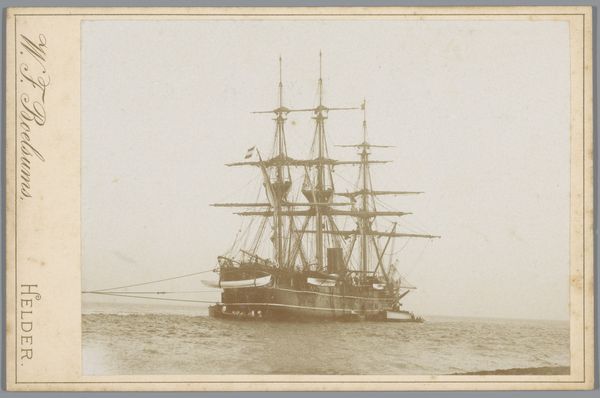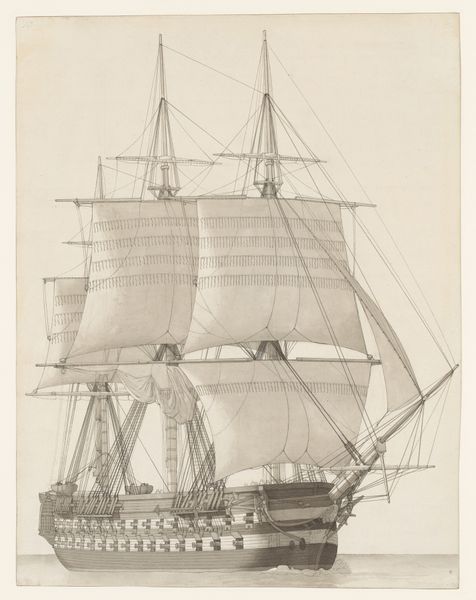
Dimensions: image: 24.77 × 19.05 cm (9 3/4 × 7 1/2 in.) sheet: 29.1 × 22.3 cm (11 7/16 × 8 3/4 in.)
Copyright: National Gallery of Art: CC0 1.0
Editor: We’re looking at “San Remo,” a pencil drawing from 1888 by John William Casilear. I'm struck by its stillness and the precision in rendering such a massive ship. How does this drawing fit into the broader art scene of its time? Curator: That stillness is key. Consider that the late 19th century saw industrialization rapidly changing landscapes and lives. Casilear, rooted in the Hudson River School tradition, provides a counterpoint. Though representational, "San Remo" doesn't document industry or urbanization directly. Instead, it offers a Romantic view – nature and tradition, the ship representing connection yet existing peacefully in its environment. Why do you think Casilear chose such a subject during a period of such monumental change? Editor: Perhaps as an escape, a visual representation of a world untouched by the social upheaval of industrial society? Curator: Precisely. Also, notice the location. San Remo, on the Italian Riviera, became a popular destination for the wealthy during this period. Travel became increasingly accessible, making scenes of picturesque European locales highly desirable. Was Casilear depicting a social class or simply a specific locale? Editor: That makes me think about the market for his art. These landscapes weren't just artistic expressions; they were also commodities for a specific, privileged audience. It makes you wonder about who was able to afford to bring such scenes into their homes. Curator: Exactly! The production and consumption of art are deeply intertwined with social and economic structures. Considering Casilear’s art in that light shows how artists navigated this evolving world, making deliberate choices about subject matter and style. Editor: I see this drawing differently now, not just as a peaceful landscape, but also as a product of very specific cultural forces. Curator: Absolutely. Looking beyond the surface reveals art's relationship to the world we live in.
Comments
No comments
Be the first to comment and join the conversation on the ultimate creative platform.
